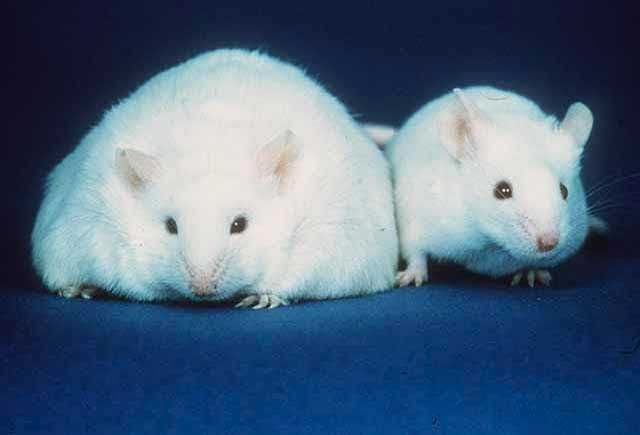New Obesity Gene Discovered; Controls Metabolism And Marks Aging

Researchers from the Spanish National Cancer Research Centre (CNIO) have discovered a gene that may have a key role in human obesity.
"We still don't know what evolutionary significance to attach to it, but it is at the very least interesting that a telomere gene is related to obesity," said CNIO director and co-author of the study, Maria Blasco.
In the study, mice without this powerful gene had difficulty metabolizing their food at a normal rate. Researchers thought they were looking for a regulation process in the chromosome's telomeres, but instead found a strong connection to obesity causation, which may lead to a solution for one of the nation's biggest epidemics.
Telomeres are short DNA fragment caps at the end of DNA strands. RAP1 is a group of proteins that makes up a gene that protects the telomeres of chromosomes from deteriorating or fusing with neighboring chromosomes. Telomeres contain a specific gene sequence that shorten with each cellular division, a process that measures the aging of an organism. Ultimately, these telomeres set a limit on a cell's lifespan, known as the cell's Hayflick limit, and eventually a person's life. However, telomere length does not indicate how long a person will live.
CNIO's Telomeres & Telomerase Group, which performs in-depth research studies, found RAP1 does not change in chromosomes. Besides protecting the telomeres, the RAP1 has been found in the rest of the chromosome, and researchers suspect its other function may be regulating the gene.
In order to discover its functionality and importance to the organism, CNIO researchers created a lineage of mice without RAP1 for comparison purposes. Surprisingly, researchers discovered a model for obesity.
The important role researchers thought they were going to discover was, in fact, a regulation process, but more specifically it controlled the genes involved in metabolism.
"Mice-especially female mice-without RAP1 do not ear more, but do gain weight. They suffer from metabolic syndrome, accumulate abdominal fat and present high glucose and cholesterol levels, amongst other symptoms," said Paula Martinez, CNIO researcher and one of the study's authors.
The reason RAP1 plays an important role in metabolism is because it is responsible for sending a signal to another protein, PPAR-gamma. Mice with PPAR-gamma deficiency suffered the same type of obesity because of their abnormal metabolism, making the two connected.
Telomere lengths have been an interesting point of research for many scientists across the globe in terms of age-related data collection. Now that RAP1, the gene that truly controls the speed in which telomeres split, also regulates metabolism in mice, researchers will have to take a close look at the busy gene and see if controlling RAP1 will be the solution to genetic weight loss issues.
The next step for researchers will be to study if RAP1 also plays a role in human obesity. "The discovery adds an element to the obesity equation and opens up a possible new link between metabolic dysfunction and aging, via a protein present in telomeres," said Blasco.
Considering the American Medical Association voted to recognize obesity as an official disease, at its yearly conference in Chicago this week, it is becoming imperative that all avenues of research are explored. Currently, more than two-thirds (68.8 percent) of adults are considered overweight or obese based on their body-mass index.
According to the American Obesity Association, the medical expenditures for the obese and overweight are more than $90 billion annually in America.



























